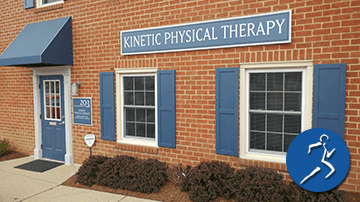 Vertigo can be very scary. We can take balance for granted and don’t think about much until we don’t have it any longer. Most likely, you have been dizzy or lost your balance temporarily. Whether you felt seasick on a boat, finished a carnival ride, or even spun around in an office chair too quickly. However, those feelings of the room spinning were temporary, and your sense of balance resumed. Imagine if that feeling stayed with you all day or as you lie down, causing your daily activities to come to a standstill. That is what happens to many who suffer.
Vertigo can be very scary. We can take balance for granted and don’t think about much until we don’t have it any longer. Most likely, you have been dizzy or lost your balance temporarily. Whether you felt seasick on a boat, finished a carnival ride, or even spun around in an office chair too quickly. However, those feelings of the room spinning were temporary, and your sense of balance resumed. Imagine if that feeling stayed with you all day or as you lie down, causing your daily activities to come to a standstill. That is what happens to many who suffer.
Why Vertigo Happens
Often caused by an inner ear problem, giving the sensation of feeling off-balance or illusion of movement. The medical term for experiencing a spinning sensation is benign paroxysmal positional vertigo (BPPV). It may surprise most people to learn that the inner ear is not involved with hearing but rather with balance. This is called the vestibular system.
The body’s vestibular system includes the parts of the inner ear and brain that help control balance. There are fluid-filled tubes in the inner ear called semicircular canals. When the head moves, the fluid moves inside these tubes. The canals are quite sensitive to any movement of the fluid, so the sensation of the fluid moving in the tubes tells the brain the body’s position. This is how balance is maintained.
BPPV occurs when tiny pieces of calcium break free and float inside the tube. This sends confusing messages to the brain about the body’s position.
Living With Vertigo
There can be many BPPV symptoms, including dizziness, nausea, lightheadedness, feeling like you’re spinning even while lying down, and feeling the floor is tilting.
Attacks can happen suddenly and last for a few seconds, or they may last much longer – up to a few days. A person may lose their balance or fall when they are struggling with vertigo. Those with more prolonged bouts of vertigo may find themselves in bed, unable to even lift their head without becoming nauseous.
Factors For an Increased Risk of Vertigo
Vertigo can strike anyone, but certain risk factors may increase changes. These include:
- Suffering a head injury
- Having a blood relative who has vertigo
- Being over the age of 50
- Having an inner ear infection
- Experiencing a previous episode of vertigo
- High levels of stress
- Hormonal fluctuations
- Taking certain types of medication
Treatment
The good news is that BPPV is very treatable by a physical therapist when it comes to vestibular problems. Most patients who suffer from vertigo don’t need more than a couple of physical therapy sessions.
Once a patient has overcome vertigo through physical therapy, they may find that their balance improves and their fear of falling is alleviated. Everyday life activities can resume with the loss of a spinning sensation.
Ending Vertigo
If you are suffering from vertigo, our trained staff has experience restoring vestibular systems to alleviate this affliction. Contact Kinetic Physical Therapy today to find out how we can help restore your quality of life.


